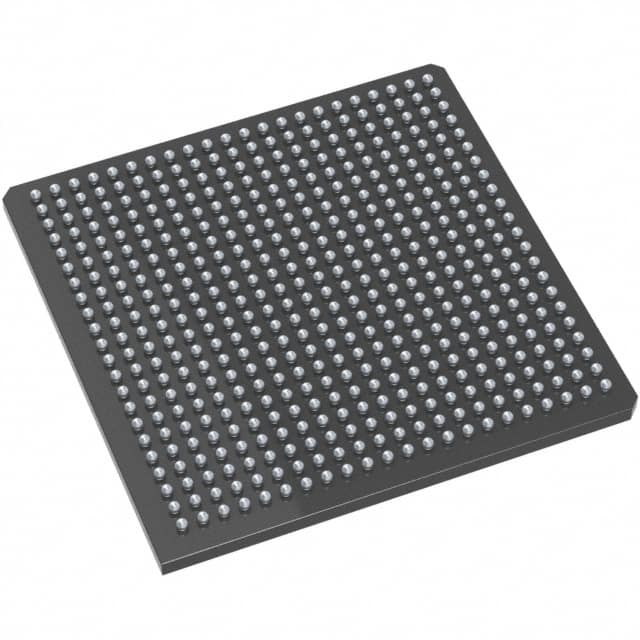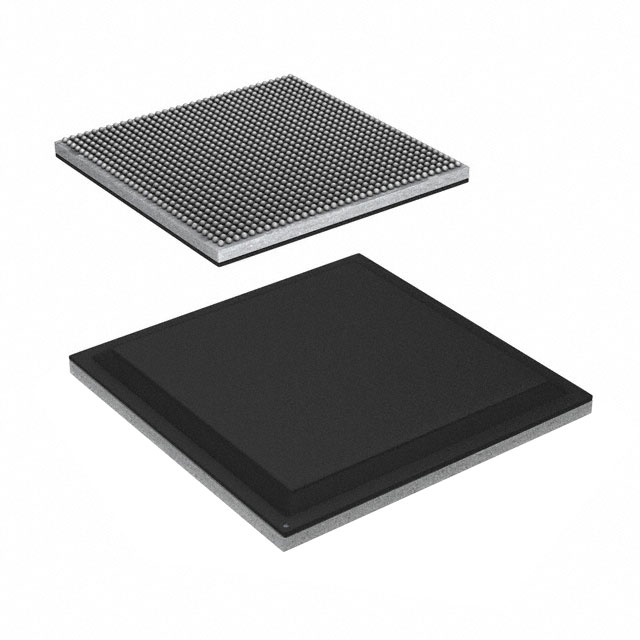Ⅰ. The key features and advantages of embedded systems based on SoCs
Ⅱ. Physical Characteristics of Embedded - System On Chip (SoC)
Ⅲ. Electrical Characteristics of Embedded - System On Chip (SoC)
Embedded - System On Chip (SoC)
Embedded systems play a significant role in various industries, encompassing applications such as consumer electronics, automotive, healthcare, industrial automation, and more. A System on Chip (SoC) is a key concept in the design and development of embedded systems. An SoC refers to a single integrated circuit that integrates multiple functional components onto a single chip, providing a comprehensive solution for building complex embedded systems.

The primary purpose of an SoC is to consolidate various hardware components onto a single chip, offering benefits such as reduced size, power consumption, and cost. By integrating components such as microprocessors or microcontrollers, memory subsystems, input/output interfaces, and peripherals onto a single chip, SoCs simplify the design, development, and production of embedded systems.
Here are some key features and advantages of embedded systems based on SoCs:
1.Integration: SoCs enable the integration of diverse hardware components onto a single chip, reducing the need for separate chips and minimizing the overall system complexity. This integration leads to smaller form factors, making it possible to create compact and portable embedded devices.
2.Performance: SoCs often incorporate high-performance microprocessor cores, providing substantial processing power for running complex applications. These cores may be general-purpose or specialized for specific tasks, enabling efficient execution of computational and control tasks in embedded systems.
3.Memory Subsystems: SoCs include on-chip memory subsystems, such as RAM and ROM, to provide storage for program code, data, and intermediate results during processing. This eliminates the need for separate memory chips and improves the overall system performance.
4.Peripheral Interfaces: SoCs integrate various peripheral interfaces, allowing seamless connectivity and interaction with external devices. These interfaces include serial communication interfaces (UART, SPI, I2C), USB ports, Ethernet controllers, display controllers, audio codecs, camera interfaces, and more. The integrated peripherals simplify the system design and enable a wide range of applications.
5.Power Efficiency: SoCs often incorporate power management units (PMUs) that optimize power consumption by controlling voltage levels, clock frequencies, and power states of different components. This results in improved power efficiency, making SoCs suitable for battery-powered devices and energy-conscious embedded systems.
6.Development Ecosystem: SoCs come with development tools, software libraries, and software frameworks that facilitate the development and programming of embedded systems. These tools, such as IDEs, compilers, and debuggers, simplify the software development process and accelerate time-to-market for embedded system projects.
7.Application Diversity: SoCs find applications in various industries, including consumer electronics, automotive systems, healthcare devices, industrial automation, and Internet of Things (IoT) devices. The versatility of SoCs allows them to power a wide range of embedded systems, catering to different performance, connectivity, and power requirements.
In summary, SoCs provide a comprehensive solution for building embedded systems by integrating multiple hardware components onto a single chip. They offer advantages in terms of size, power efficiency, performance, and ease of development, making them a popular choice for a broad range of embedded applications.
Physical Characteristics of Embedded - System On Chip (SoC)
The physical characteristics of an embedded system based on a System on Chip (SoC) refer to the physical attributes and features related to the hardware implementation of the SoC. These characteristics determine the form factor, package type, pin configuration, and other physical aspects of the embedded system. Here are some common physical characteristics of embedded systems based on SoCs:
1.Package Type: The SoC is encapsulated in a package that protects the chip and provides electrical connections. Package types can include Ball Grid Array (BGA), Quad Flat Package (QFP), Small Outline Integrated Circuit (SOIC), or Chip Scale Package (CSP). The package type influences the size, pin count, and thermal characteristics of the embedded system.
2.Pin Configuration: The SoC has pins or pads on its package that establish electrical connections with the external world. The pin configuration specifies the number, arrangement, and function of the pins, enabling the SoC to interface with other components or systems. The pin count can range from a few dozen to hundreds or more, depending on the complexity of the SoC.
3.Power Supply: Embedded systems based on SoCs require a power supply to operate. The physical characteristics include the voltage levels and power consumption of the SoC. The voltage levels may vary depending on the specific SoC design, such as 1.8V, 3.3V, or higher. Power consumption characteristics, such as current draw and power dissipation, are important considerations for system design and thermal management.
4.Heat Dissipation: SoCs can generate heat during operation, especially when running demanding applications or performing computationally intensive tasks. The physical characteristics of an embedded system may include heat sinks, thermal pads, or other cooling mechanisms to dissipate heat and maintain the SoC within acceptable temperature limits.
5.Connectors: Embedded systems based on SoCs often require connectors for interfacing with external devices or systems. These connectors can include interfaces for power input, communication ports (such as USB, Ethernet, or HDMI), peripheral connections (such as GPIO, I2C, or SPI), and audio/video interfaces (such as headphone jacks or display connectors). The physical characteristics of these connectors, including their type, pin count, and mechanical design, determine the compatibility and connectivity options of the embedded system.
6.Form Factor: The form factor refers to the physical size, shape, and mounting options of the embedded system. SoCs can be integrated into various form factors, such as single-board computers, modules, or custom-designed PCBs. The form factor affects the overall dimensions, weight, and compatibility of the embedded system with specific application requirements or industry standards.
7.Environmental Considerations: Embedded systems based on SoCs may have physical characteristics that make them suitable for specific environmental conditions. For example, they may be designed to withstand high temperatures, humidity, or vibrations in industrial applications or be sealed against dust and moisture in rugged or outdoor environments.
These physical characteristics play a crucial role in the design, integration, and deployment of embedded systems based on SoCs. They determine the system's compatibility, reliability, thermal performance, and physical integration with other components or systems in various application domains.

Electrical Characteristics of Embedded - System On Chip (SoC)
The electrical characteristics of an embedded system based on a System on Chip (SoC) pertain to the electrical signals, parameters, and requirements involved in the operation and functionality of the SoC. These characteristics ensure proper signal integrity, power management, and compatibility with other components. Here are some common electrical characteristics of embedded systems based on SoCs:
1.Power Supply: SoCs require a power supply to operate, and their electrical characteristics include voltage levels and power consumption. The power supply voltage levels can vary depending on the specific SoC design and can range from low voltage levels, such as 1.8V or 3.3V, to higher levels for certain components. Power consumption characteristics, such as current draw and power dissipation, are crucial considerations for power management and system design.
2.I/O Voltage Levels: SoCs have specific voltage levels for their input/output (I/O) interfaces. These voltage levels determine the signal compatibility and ensure proper communication between the SoC and other components or systems. Different I/O standards, such as CMOS, LVCMOS, LVTTL, LVDS, or HSTL, may be employed, each with its specific voltage levels and signal characteristics.
3.Clocking: SoCs rely on clock signals to synchronize the operation of their internal components. The electrical characteristics of the clock signals include frequency, duty cycle, and voltage levels. Proper clocking is essential for maintaining synchronization and ensuring accurate data sampling and processing within the SoC.
4.Signal Integrity: SoCs require attention to signal integrity to maintain reliable data transmission and reception. This involves managing factors such as signal voltage levels, impedance matching, noise reduction, and minimizing signal reflections. Techniques like proper PCB layout, controlled impedance traces, shielding, and noise filtering are employed to ensure good signal integrity.
5.Input/Output Interfaces: SoCs feature various input/output interfaces to communicate with external devices or systems. These interfaces include UART (Universal Asynchronous Receiver-Transmitter), SPI (Serial Peripheral Interface), I2C (Inter-Integrated Circuit), USB (Universal Serial Bus), Ethernet, GPIO (General Purpose Input/Output), and more. The electrical characteristics of these interfaces define the signaling protocols, voltage levels, timing specifications, and signal integrity requirements.
6.Electrostatic Discharge (ESD) Protection: SoCs incorporate ESD protection measures to safeguard against electrostatic discharge events. ESD protection structures are integrated into the SoC to prevent damage caused by electrostatic charges that can build up during handling or operation.
7.Power Management: SoCs often include power management units (PMUs) or voltage regulators to control and manage power supply to different components or subsystems. These power management features optimize power consumption, regulate voltage levels, and implement power-saving modes to enhance energy efficiency and extend battery life in portable or low-power embedded systems.
8.Environmental Considerations: The electrical characteristics of embedded systems may also account for environmental considerations. For instance, systems designed for harsh industrial environments may require higher tolerance to temperature variations, electrical noise, humidity, or vibration. Electrical characteristics such as operating temperature range, noise immunity, and EMI/EMC compliance may be specified to ensure reliable operation in specific environmental conditions.
Understanding and considering the electrical characteristics of embedded systems based on SoCs is vital for proper design, integration, and functionality. These characteristics enable compatible and reliable communication, efficient power management, and effective signal integrity, resulting in robust and high-performance embedded systems.



